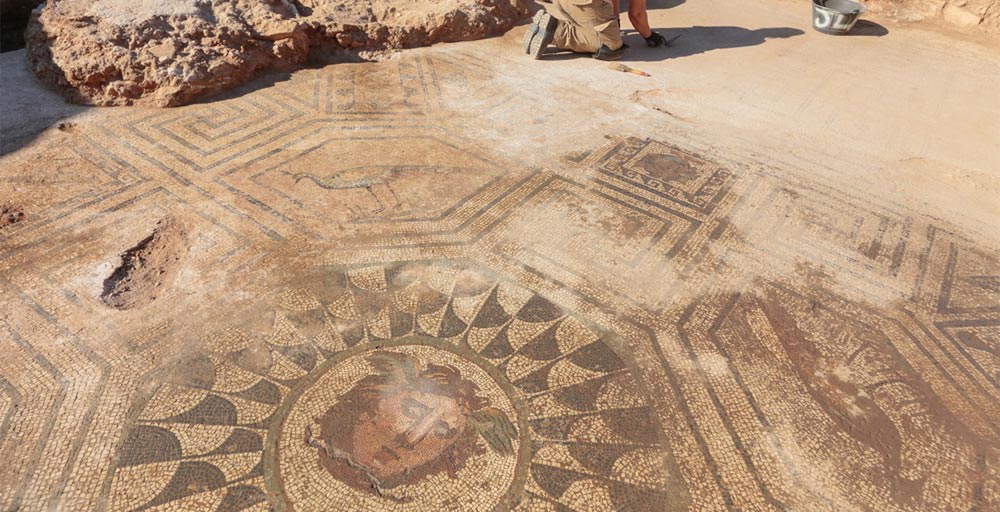Important archaeological discovery in Spain, in an archaeological excavation near the city of Mérida, in the Autonomous Community ofExtremadura. Excavations at Huerta de Otero, an archaeological area located on the western side of the city, bordered by the retaining dam of the Ana River and the southern wall of the Arab citadel, have in fact unearthed a large mosaic with a head of Medusa in the main room of a Roman domus. The research project at Huerta de Otero began in 2019, the goal to arrive at a complete documentation of the site through archaeological excavations, geophysical surveys and the adaptation of the exhumed remains to public visits. Much of the credit goes to a group of student workers from the Barraeca II municipal vocational school, who participated in the excavation as part of their training activities.
The excavation led to the discovery of a Roman domus and one of its rooms, completely paved with a polychrome mosaic of about 30 square meters, the central motif of which is the head of Medusa framed by an octagonal medallion. In the corners, within hexagons, are instead depictions of four peacocks, symbolizing the four seasons. The whole, explains José Vargas, archaeologist and project supervisor at the Barraeca II school, is arranged “in a large square in which floral and animal motifs (birds and fish) alternate with masks. The appearance of the Medusa image is typical in mosaic floors of the second century A.D. as an apotropaic motif for the inhabitants of the domus.”
The archaeological findings of the various interventions between 2019 and 2023 have uncovered a section of the Roman foundation wall about 40 meters long and 2.70 meters wide: this is where the maximum height so far documented of the entire preserved city wall of 5 meters is located. In addition, the remains of a road running parallel to the wall with a width of 6 meters have been documented.
“We are very interested in enhancing new archaeological sites and that is why, thanks to the collaboration with operators specialized in protection and archaeological excavations at the Barraeca II school, which began in September last year, excavations were carried out aella Huerta de Otero with these great results.”, points out Pilar Amor, delegate for training and archaeological heritage of the Mérida administration, adding that the project last year was able to guarantee job placement for 85 percent of the 15 participating students.
For Félix Palma, director of the Ciudad Monumental Consortium, this site “has an exceptional character for the level of preservation of the remains and, above all, for the ornamental apparatus that decorates the well-preserved house: not only the mosaic of jellyfish but also paintings and sculptural motifs. Excavation began in Huerta de Otero in 1976, and in 2019 the City Council, together with the Consortium and the Institute of Archaeology, saved that site from oblivion; now the challenge is to enhance it so that people can enjoy it.”
 |
| Spain, major discovery in Mérida: unearthed large Roman mosaic with Medusa |
Warning: the translation into English of the original Italian article was created using automatic tools. We undertake to review all articles, but we do not guarantee the total absence of inaccuracies in the translation due to the program. You can find the original by clicking on the ITA button. If you find any mistake,please contact us.